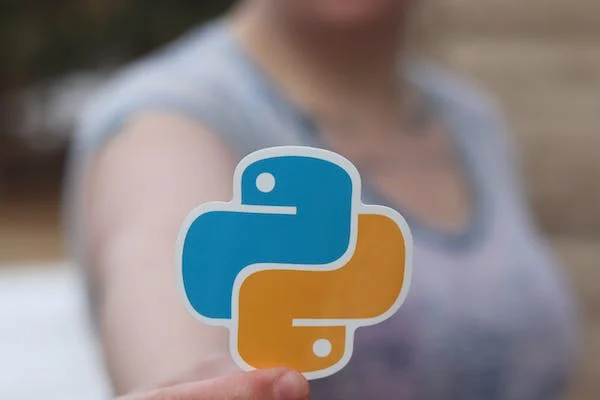What is the Location of the Python Variable Scope?

Every programming language relies heavily on variables. Python’s variable system provides extensive customization options. As with other programming languages, the scope of variables is set during their declarations in Python. First, we’ll go through the basics of making a function in Python, and then we’ll move on to the scope of variables in Python. Python’s module system and scope definitions facilitate neatness.
Before they can be used, variables in software must have their definitions established. It has a significant impact in every region. The first part of this guide delves into the concept of variables in greater detail. An aspect of Python’s “scope of variables in Python” that you’ll investigate for this task is its name. In Python, variables can be defined with a variety of scopes, including local, global, and interpreter. When a variable’s value is affected by its scope, Python employs the Least Exceptional Global Behaviour (LEGB) technique to make the determination. Reading a variety of longer works will help you get ready for the global and nonlocal terminology you’ll encounter.
There is a concept of “Variable Scope” in Python.
Predeclaration of variables is common practice. The scope of variables in Python refers to the values that can be assigned to a variable in Python. You can just visit the site, input your query, and obtain a prompt response.
In the computer system, data is given a label. Data with meaning is required by the computer. Python variables can hold information of any type (string, integer, float, etc.). In Python, assignments are made with the = operator.
defining a variable’s value at the outset of a program’s execution. You’ve assigned “First String” and “1” to the variables string var and int var. To declare a variable and assign a value in Python, use the = symbol. When handing out tasks, double-check the right side of the numbers to ensure accuracy.
Python’s variable generation is idiosyncratic.
Remember that you can only use alphabetic and numeric characters.
One may argue that it is the one preceding that one.
gains unrelated to keyword usage (to be continued…)
The Benefits and Drawbacks of Using the Python Programming Language
The building blocks of logic are assertions and instructions. A “function” is a discrete chunk of code in computer science. It is acceptable to utilize the same variable names within and outside of the function. Their opinions, however, couldn’t be more different from one another. Declared local variables are only accessible inside the scope of the current function. No access is granted to the parameters by the function. An external variable can be used in a function. This function is open to the inclusion of an external parameter.
Set Python Bounds
In Python, you can only use declared variables. The scope of variables in Python is strange. Python only allows one function per variable, it seems. Python’s local scope is to blame for this. There is widespread reliance on global variables, which are not scoped to a specific function. We are not restricted to using it exclusively outside of the function, as we have access to it there as well. What we call “this” in C++ is called “global scope” in Python. Let’s have a look at a simple scope of variables in a Python example to see how this works.
You can improve your model by including language and country of origin as independent variables.
Almost everyone in India can understand and speak basic Hindi. Consequently, Hindi is only useful within India and is of no use elsewhere. Be mindful of the English grammar you use. English is the first language of most people on this planet. Since so many people around the world speak English, it carries considerable weight. There is a considerable audience for the show outside of India as well. Given that Python variables written in English can affect the entire program, it makes sense to say that their Hindi equivalents are more narrowly focused. There have been a lot of assumptions made so far. So that you have a solid understanding of Python scoping, let’s dive right in.
It’s best practice to store variables locally in Python.
Many of the outcomes of the function are dependent on these local variables. Python strictly forbids the direct use of variables outside of function parameters.
The Far-Reaching Consequences of Python
Code within a function has access to variables declared outside of it.
An International Search Term Analysis Method written in Python
The local variable can also be made global using another approach. You must realize there is a difference between the global keyword and Python’s global scope. A “global” variable has a broader context than just one function. The global keyword in Python allows us to alter a variable in a place other than where it would ordinarily be used. All local variables in a function are visible from outside the function.
The word “nonlocal” is widely used in the Python community.
The nonlocal keyword in Python allows access to variables defined beyond the scope of a subfunction.
In a “nonlocal” function, the variables are not in the local area.
Summary
We spoke about the differences between local and global variables in Python. Several methods exist in Python for calculating the potential range of variables.
The Global Keyword makes the local variables of a function visible outside the function. In Python, global variables can be created with the help of the nonlocal keyword. There is no time to try out various Python configurations.
Our thoughts and prayers are with you at this time. If you have any questions about the accuracy Python variable, please leave a comment below.
There are different approaches to making the local variable universal. You must realize there is a difference between the global keyword and Python’s global scope. The global keyword in Python lets you alter a variable outside of the context in which it is normally used.
Related Writings





